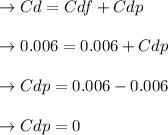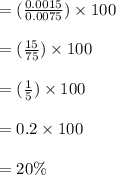
Engineering, 08.04.2020 04:28 markaylarowland8
Consider a NACA 2412 airfoil in a low-speed flow at zero degrees angle of attack and a Reynolds number of 8.9·106 . Calculate the percentage of drag from pressure drag due to flow separation (form drag). Assume a fully turbulent boundary layer over the airfoil. Assume that the airfoil is thin enough so that the skin-friction drag can be estimated by the flat-plate results discussed earlier. Now consider the same airfoil at an angle of attack of 6 degrees. Again, calculate the percentage of drag from pressure drag due to flow separation. What does this tell you about the rapid increase in drag coefficient as the angle of attack increases?

Answers: 3


Another question on Engineering

Engineering, 04.07.2019 18:10
Fluids at rest possess no flow energy. a)- true b)- false
Answers: 3

Engineering, 04.07.2019 18:10
The thermal expansion or contraction of a given metal is a function of the f a)-density b)-initial temperature c)- temperature difference d)- linear coefficient of thermal expansion e)- final temperature f)- original length
Answers: 2

Engineering, 04.07.2019 18:10
Aturning operation is performed with following conditions: rake angle of 12°, a feed of 0.35 mm/rev, and a depth of cut of 1.1 mm. the work piece is aluminum alloy 6061 with t6 heat treatment (a16061-t6). the resultant chip thickness was measured to be 1.0 mm. estimate the cutting force, fc. use shear stress of 207 mpa and coefficient of friction on the tool face of 0.6.
Answers: 1

Engineering, 04.07.2019 18:20
Air flows over a heated plate àt a velocity of 50m/s. the local skin factor coefficient at a point on a plate is 0.004. estimate the local heat transfer coefficient at this point.the following property data for air are given: density = 0.88kg/m3 , viscosity 2.286 x 10 ^-5 kgm/s , k = 0.035w/mk ,cp = 1.001kj/kgk. use colburn reynolds analogy.
Answers: 1
You know the right answer?
Consider a NACA 2412 airfoil in a low-speed flow at zero degrees angle of attack and a Reynolds numb...
Questions
























 of attack for
of attack for  :
: 





 of drag pressure due to separation flow.
of drag pressure due to separation flow. 

